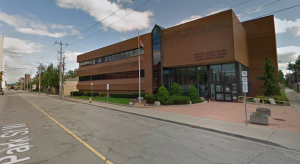
Luke Hawkins, a 22-year-old student at Carleton University, didn’t have the greatest first summer in the city to say the least.
One night in late May of this year, Hawkins recalls waking up to the ominous sound of a creature skittering across his bedroom. A cringe flashes across his face as he remembers leaping out of bed and violently flicking on the lights, only to find a large sewer rat peering up at him from the corner of his room.
“I didn’t sleep at all that night,” he said. “It was so gross … I didn’t want to be anywhere in the house. They’re gross creatures, I didn’t want to be around that.”
Over the course of the summer, Hawkins fought off a handful of other sewer rats in his student house in the Glebe, catching and killing eight in total in traps. Hawkins and his roommates finally traced the source of the rats to a large hole in the exterior foundation of the house that they sealed, conveniently located directly beside their garbage and recycling bins.
Hawkins and his roommates haven’t seen a rat in or around their home in almost four months now, but he said the memory still shakes him up.
Hawkins isn’t alone in his experience: The Capital ward is home to the largest number of complaints of sewer rat issues made to the city of Ottawa in the past four years, according to an analysis of data from Ottawa 311. Of the just over 800 rat complaints made to the city since March of 2013, 217 came from the Capital ward, slightly above the Rideau-Vanier ward with 205 but more than double any other ward in the city.
A data visualization appears below, displaying the number of sewer rat complaints reported to the city of Ottawa by ward. Source: Open Data Ottawa/Ottawa 311.
Todd Babin, owner of the Ottawa-based pest control businesses Nature’s Way Property Services, isn’t surprised that the ward, which spans across the Glebe, Old Ottawa South and East, Heron Park and Riverside neighbourhoods, is home to such a large number of complaints.
“The older sewer infrastructure in (the ward) can make it easier for rats to get into people’s homes,” Babin said, noting he has seen a “steady increase” in calls to the area.
Many homes in the Capital ward are quite old themselves, Babin added, leading to cracks in a building’s foundation, where rats are known to sneak in through.
Donna DuBreuil, president of the Ottawa-Carleton Wildlife Centre (OCWC), concurred with Babin, describing her experience nursing an injured rat back to health in her career.
“I was amazed at how intelligent and social they are, but obviously you don’t want them in your basement or attic,” she says.
DuBreuil said construction and infrastructure changes in the ward likely play a major role, pointing to the city’s combined sewage storage tunnel (CSST) project which kicked off in the ward in 2016 and is still underway.
“Every time we get a call (about rats) there’d be an infrastructure project going on nearby,” she said. “It’s uprooting them from the sewers.”
Babin agreed, recalling how the number of rat calls he received “went through the roof” when construction began on the LRT.
Babin and DuBreuil said there are a number of ways people can combat sewer rats trying to get into their homes. They recommend storing garbage in animal-proof bins and also clearing standing water, which can attract rats, along with properly sealing any prospective entry points into your home.
Ottawa Public Health declined an interview request and did not provide a statement or comment.






